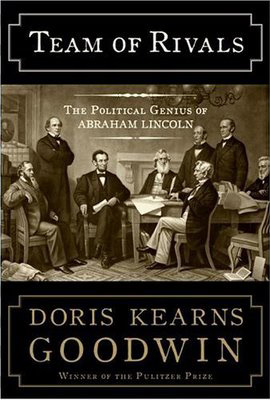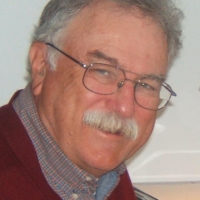
In this 150th anniversary year of the Emancipation Proclamation, we are fortunate to have Doris Kearns Goodwin’s Team of Rivals to help us understand Abraham Lincoln and the abolition of slavery. It goes together with Stephen Spielberg’s film Lincoln that has been nominated for several Oscars.
Goodwin brings the 16th President of the United States to life, a plainspoken frontiersman who seemed to come out of nowhere. Lincoln was a rawboned circuit lawyer from Illinois, born in a Kentucky log cabin, with one year of formal education – the “rail splitter.”
Goodwin portrays him as a generous, outgoing man, fond of telling jokes. He was a brilliant political strategist and tactician who defeated rivals far wealthier and better connected than he. Having won the presidency, Lincoln turned around and named his rivals to his cabinet.
Lincoln held his cabinet together against all odds. Yet on a grander scale, Lincoln held the Union itself together, spearheading a coalition that ranged from abolitionists like Frederick Douglass to border state politicians like Maryland’s Montgomery Blair.
Goodwin paints on a broad canvas, depicting the nation’s capital during the Civil War. Her book reminds me of Margaret Leech’s Reveille in Washington, likewise a Pulitzer Prize winner. Yet Goodwin delves far deeper into the political and ideological roots of the struggle.
I found especially moving her portrayal of women in the struggle. She quotes letters Frances Seward wrote to her husband, Secretary of State William Henry Seward, chastising him for retreating from his abolitionist principles and even criticizing Lincoln for concessions to the slave power. Goodwin stresses the enormous loss suffered by virtually every family from illness, a tragedy multiplied a thousand-fold by death and maiming on the battlefield.
The dramatic highpoint of Goodwin’s book – and of Lincoln’s presidency – is the Emancipation Proclamation that freed “henceforth and forever” three-and-a-half million enslaved African Americans.
Lincoln was facing one battlefield defeat after another. The death toll climbed above half a million. He had reached the conclusion that the only strategy to save the union was to free the slaves. They then enlisted in the war to defeat the slave power, something long advocated by the great abolitionist leader Frederick Douglass.
Lincoln decided in the summer of 1862 the time had come. He drafted the Emancipation Proclamation and read it to his cabinet July 22. Seward warned that if Lincoln issued the Proclamation immediately, it would be seen as an act of desperation. Lincoln agreed to wait for a Union victory on the battlefield.
Gen. Robert E. Lee crossed the Potomoc into Maryland with his army and engaged the Union army in combat at Antietam on September 7, 1862. By the end of the day, 6,000 soldiers on both sides were dead and 17,000 wounded. Yet Lee, defeated by the Union army, was forced to retreat.
It was the victory Lincoln was waiting for. On Sept. 22, the White House announced that Lincoln would sign the Proclamation January 1. Goodwin writes that the announcement was greeted with joy in the streets. Mass rallies were organized hailing the Proclamation.
Yet the “copperheads,” so-called “Peace Democrats,” campaigned during the 1862 midterm elections against Lincoln’s decision to free the slaves. They called for a “peace” that would preserve the slave power and extend slavery. The “copperheads” won big gains in that election, whittling the Republican majority to a razor thin margin in the U.S. House of Representatives. Lincoln was deeply depressed by the election results. But he stood his ground. The Proclamation was signed and sealed.
Goodwin quotes Douglass’s reaction that New Year’s Day: “We shout for joy and we live to record this righteous decree … Will it lead the President to reconsider and retract? No, Abraham Lincoln will take no step backward.”
Goodwin alludes to a letter of congratulation Lincoln received from the “workingmen of London” (page 504) for signing the Proclamation. Lincoln replied, “The resources, advantages, and powers of the American people are very great…. It seems to have devolved upon them whether a government, established on the principles of human freedom, can be maintained.”
Goodwin, referring to exchanges between Lincoln and the International Workingmen’s Association in London, was talking about an organization founded by Karl Marx and Frederick Engels. This was the labor-led movement that blocked England from recognizing the Confederacy, a crucial victory in the isolation and ultimate defeat of the slave owners.
Many of the IWA messages were drafted by Karl Marx and Frederick Engels, co-authors of the Communist Manifesto in 1848. Horace Greeley, publisher of the New York Tribune, recruited Marx and Engels to write a series of columns on the Civil War.
Lincoln had working relations with German socialists who had fled Germany after the Prussian defeat of the 1848 democratic revolution in Germany. Some ended up in the United States, Joseph Weydemeyer, for example, a close associate of Karl Marx, was commissioned by Lincoln as a Brigadier General in command of Union troops defending St. Louis.
Lincoln was not a communist or even a socialist, of course. Yet he stated clearly in his first State of the Union speech, Dec. 3, 1861, that “labor is prior to and independent of capital.” Goodwin’s book dramatizes that, above everything else, Lincoln understood the imperative of unity. He was a pioneer in helping build a new kind of coalition that abolished slavery and saved the union.
Book Review
Team of Rivals
By Doris Kearns Goodwin
915 pages, Simon and Schuster, $21.00k

MOST POPULAR TODAY


Zionist organizations leading campaign to stop ceasefire resolutions in D.C. area

Communist Karol Cariola elected president of Chile’s legislature

Afghanistan’s socialist years: The promising future killed off by U.S. imperialism

High Court essentially bans demonstrations, freedom of assembly in Deep South






Comments